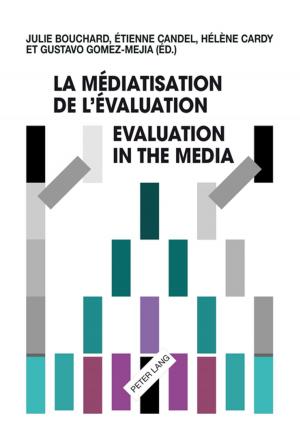The Aesthetic Revolution in Germany
17501950 From Winckelmann to Nietzsche from Nietzsche to Beckmann
Nonfiction, Social & Cultural Studies, Social Science, Anthropology| Author: | Meindert Evers | ISBN: | 9783631719770 |
| Publisher: | Peter Lang | Publication: | April 18, 2017 |
| Imprint: | Peter Lang GmbH, Internationaler Verlag der Wissenschaften | Language: | English |
| Author: | Meindert Evers |
| ISBN: | 9783631719770 |
| Publisher: | Peter Lang |
| Publication: | April 18, 2017 |
| Imprint: | Peter Lang GmbH, Internationaler Verlag der Wissenschaften |
| Language: | English |
The Aesthetic Revolution in Germany refutes the stereotypical image of Germany as the country of romantic but unworldly poets and thinkers. In 1750, an aesthetic revolution takes place in Germany, at the beginning of which stands J.J. Winckelmann. The romantic movement (Schiller, Hölderlin, Kleist) paves the way for this aesthetic revolution, which Heine is one of the first to criticise. Since then, criticism has never fallen silent. Opposing the rationalisation of the world (Wagner), the aesthetic revolution climaxes in the philosophy of Nietzsche. During the 1920s and 30s, it becomes a conservative revolution (George, Spengler, Th. Mann, Benn) and fails inevitably. Beckmann and M. Walser show that particularly after 1945 the aesthetic perspective is still necessary.
The Aesthetic Revolution in Germany refutes the stereotypical image of Germany as the country of romantic but unworldly poets and thinkers. In 1750, an aesthetic revolution takes place in Germany, at the beginning of which stands J.J. Winckelmann. The romantic movement (Schiller, Hölderlin, Kleist) paves the way for this aesthetic revolution, which Heine is one of the first to criticise. Since then, criticism has never fallen silent. Opposing the rationalisation of the world (Wagner), the aesthetic revolution climaxes in the philosophy of Nietzsche. During the 1920s and 30s, it becomes a conservative revolution (George, Spengler, Th. Mann, Benn) and fails inevitably. Beckmann and M. Walser show that particularly after 1945 the aesthetic perspective is still necessary.















